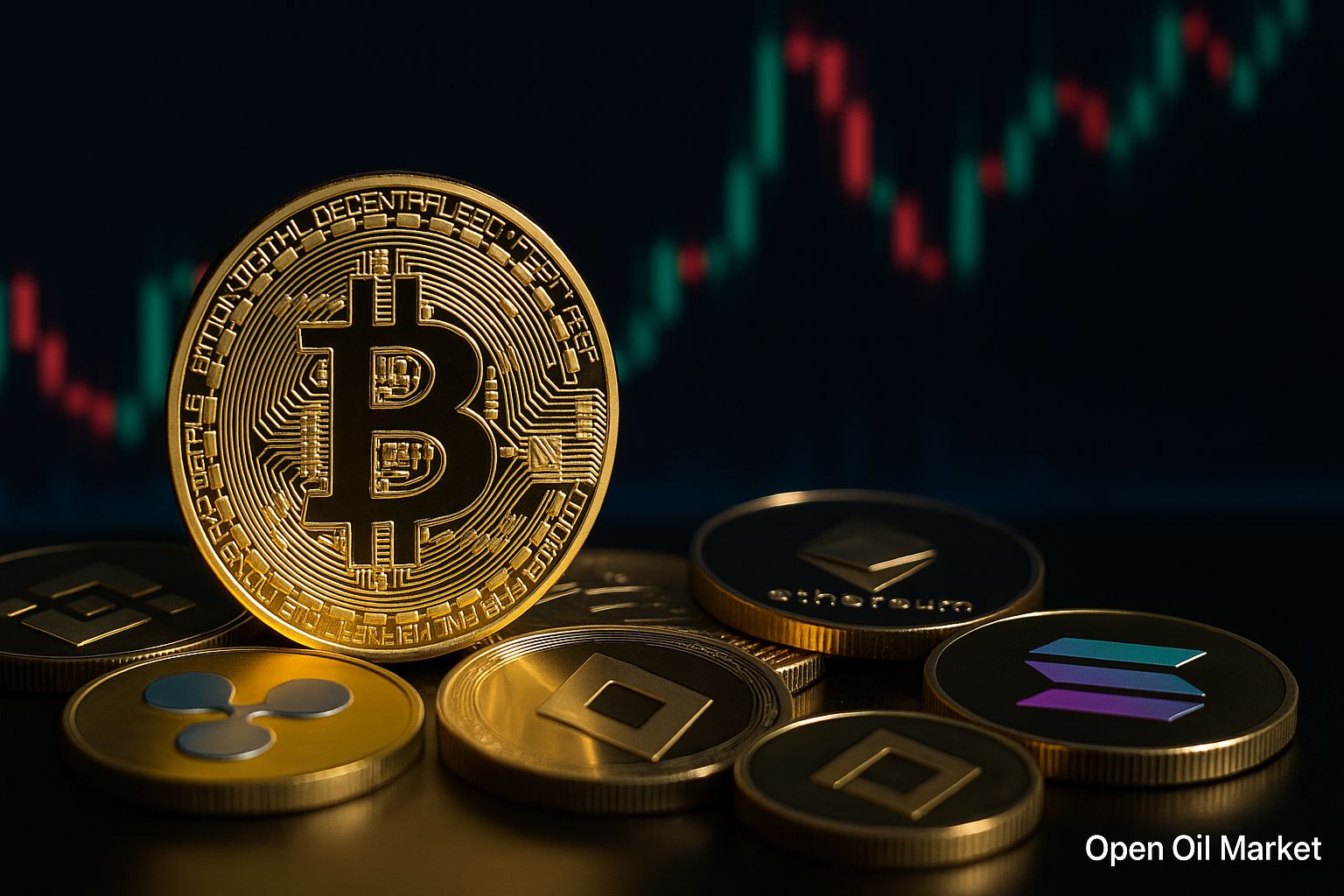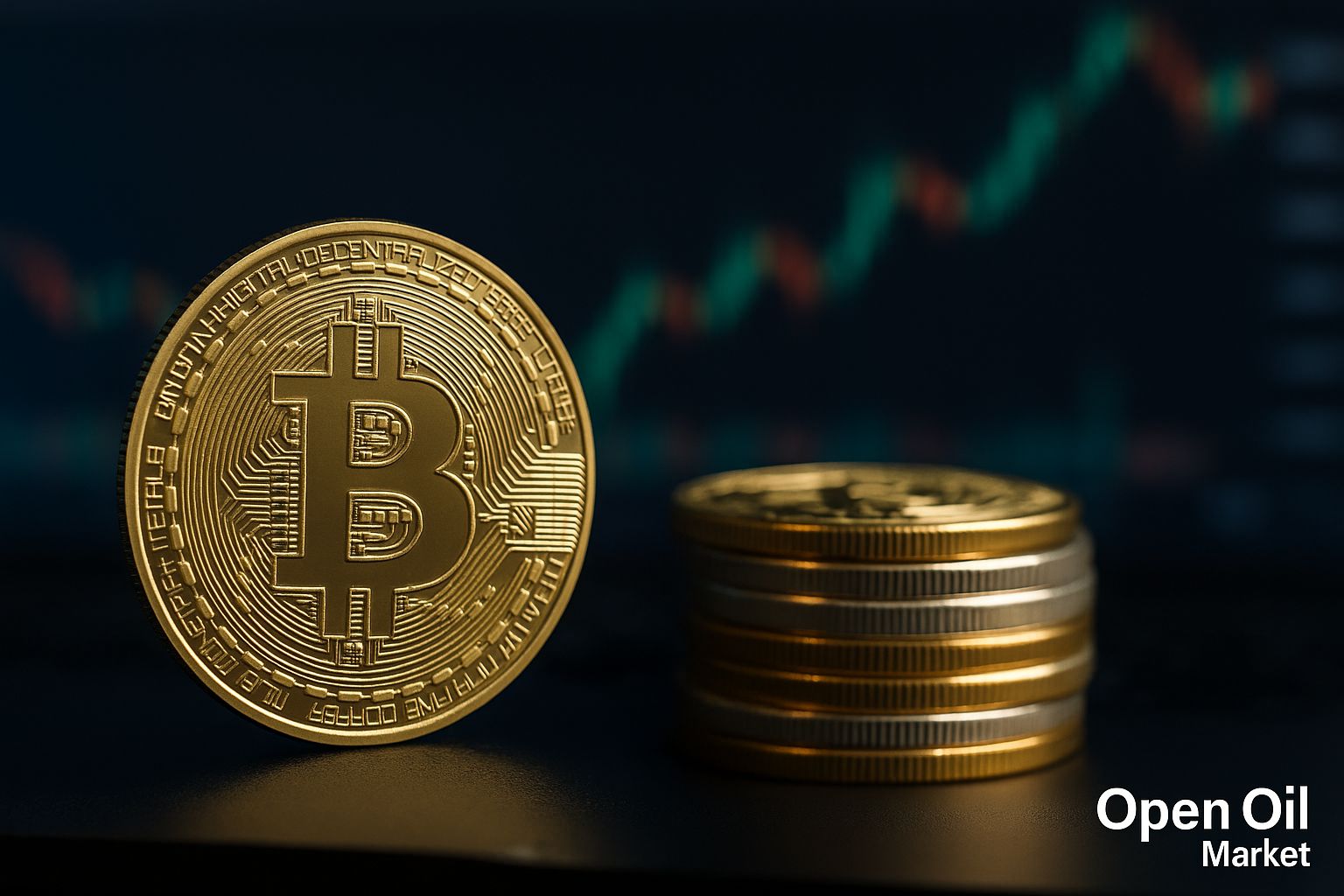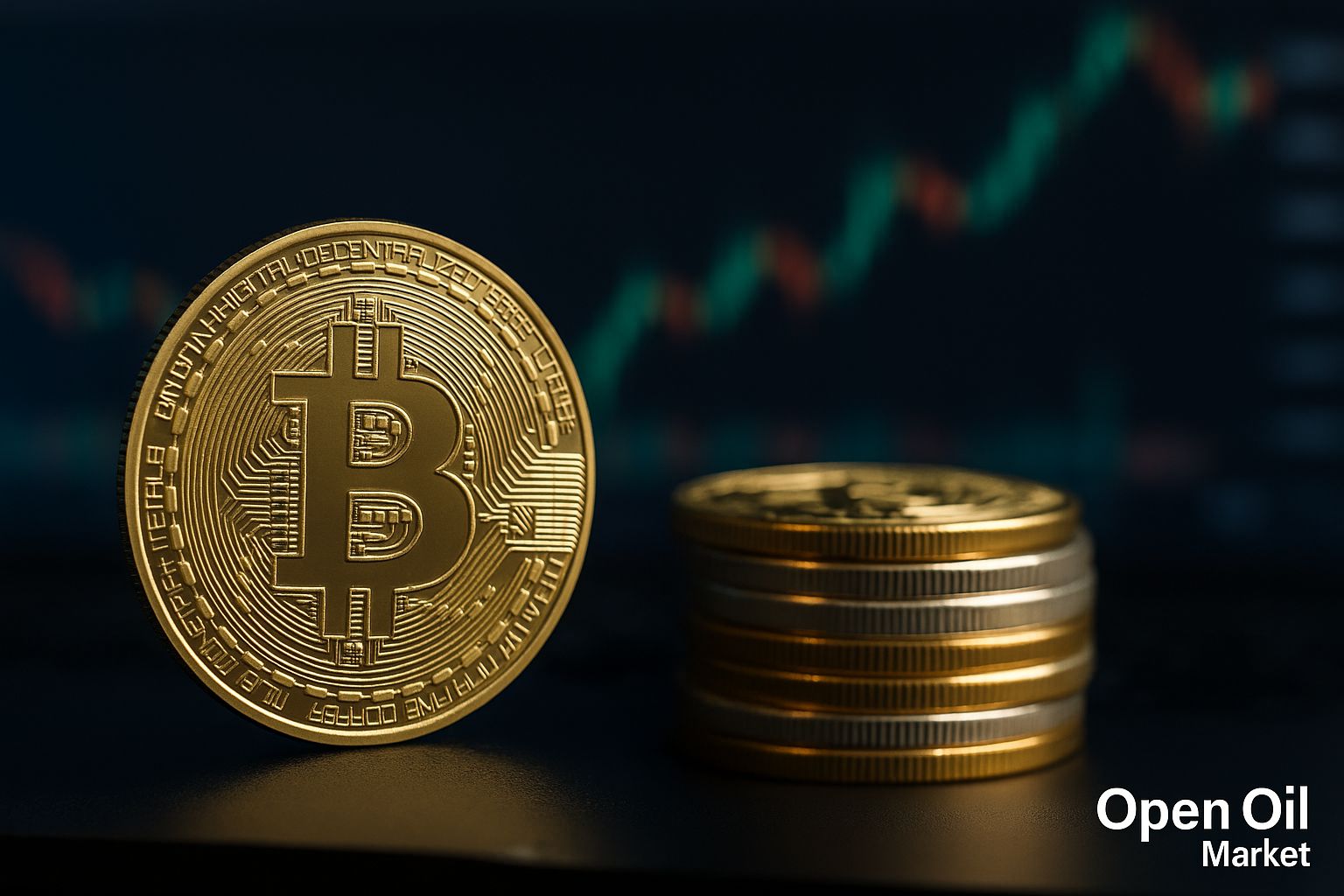
Current Cryptocurrency News as of 28th October 2025: Bitcoin Maintains Its Position, Altcoins Surge, Institutional Investors Return to the Market. Analysis of Trends, Macroeconomics, and the Top 10 Popular Cryptocurrencies.
Market Overview: Ongoing Stabilisation
As of the morning of 28th October, the cryptocurrency market is showing signs of further stabilisation following recent volatility. Bitcoin remains above the psychologically significant level of $110,000 and is attempting to build on its recovery, with current levels approximately 3% higher than last week. The total market capitalisation of digital assets is once again approaching $4 trillion, reflecting a gradual return of demand. Investor sentiment is cautiously optimistic: improvements in the macroeconomic environment (in anticipation of a Federal Reserve interest rate cut at the meeting on 29th October) and a reduction in geopolitical tensions are supporting appetite for riskier assets. Leading altcoins are also on the mend, with most coins in the top 10 in the "green zone," recovering 5–10% from the mid-month lows.
Bitcoin: Maintaining Position and Attempting Growth
The largest cryptocurrency, Bitcoin (BTC), is consolidating around $115,000 after experiencing a correction in mid-October. Earlier this month, BTC briefly reached a new all-time high of approximately $126,000 amidst the hype surrounding the launch of the first spot ETF in the US, but subsequently, it retraced to around $106,000 at its lowest point. Currently, Bitcoin is securely holding above $110,000, demonstrating resilience: the key support level around $100,000 held during the sell-off, bolstering market participants' confidence. Although the current price is still about 8–9% below the record peak, the positive dynamics of recent days indicate an attempt to revert to an upward trend.
The fundamental indicators for the Bitcoin network remain strong. The total network hash rate is close to record levels, reflecting miner confidence and the absence of capitulation even amid recent price declines. Long-term investors have also taken advantage of the correction: on-chain metrics indicate a rise in balances on large addresses, signalling accumulation of coins during dips. Additionally, sustained interest from institutional investors is supporting BTC: the ongoing inflow of funds into Bitcoin exchange-traded funds and purchases by major players (such as the recent acquisition of 400 BTC by mining company Marathon Digital) reaffirm Bitcoin's status as "digital gold" and a hedge asset.
Ethereum: Resilience and Network Development
The second-largest cryptocurrency, Ethereum (ETH), exhibits a similar recovery pattern. At the beginning of the month, ETH surged to around $4,500; however, the overall market correction saw its price drop to approximately $3,900. Currently, Ethereum is trading close to $4,000, recovering some losses (around +4% over the week). Despite the volatility, Ethereum firmly retains its position as the primary platform for decentralised finance (DeFi) and NFTs, with a market capitalisation of approximately $480 billion.
Institutional interest in Ethereum remains high and is even intensifying. Open interest in ETH futures on the Chicago Mercantile Exchange reached an all-time high, indicating large players' expectations for further growth for the cryptocurrency. Furthermore, regulators have approved a number of Ethereum-based investment products in recent months – including funds linked to staking returns from ETH – broadening access for large investors to this asset. Fundamental metrics for the network also inspire optimism: the number of active Ethereum addresses consistently exceeds 600,000 daily, and over 35 million ETH (around 30% of the total supply) is locked in staking contracts. These factors support community confidence and enhance the perception of Ethereum as a long-term asset with significant growth potential.
Altcoins: Market Rebound and New Drivers
The broader altcoin market is gradually reviving after the mass sell-off in mid-October. Most leading coins are showing a robust rebound: investors are re-entering risk assets as uncertainty diminishes. Notably, Solana (SOL) has seen its price return to the vicinity of $200 per coin, thanks to a combination of overall market growth and positive news. Recently, the world's first spot ETF on Solana was launched (on an exchange in Hong Kong), raising the project's profile and attracting additional attention. On this backdrop, SOL has strengthened by approximately 8% in recent days. Overall, top altcoins – from XRP to Dogecoin – are trading positively, synchronously following the recovery of Bitcoin and Ethereum.
Some cryptocurrencies are showing additional growth drivers due to fundamental events. For instance, the Ripple token (XRP) is holding around multi-year highs (above $2.5) amidst continued institutional progress for Ripple: after its legal victory against the SEC in 2023, the company is expanding partnerships with banks and even seeking a banking license, which enhances confidence in XRP for cross-border payments. Cardano (ADA), despite relatively subdued price dynamics (around $0.75 after a pullback), is also attracting attention due to recent technological updates (the implementation of the Hydra scaling protocol, among others), laying the groundwork for future ecosystem growth. Thus, the altcoin market at the end of October demonstrates a moderately positive sentiment, although volatility still remains above average levels.
Market Leaders: Top 10 Most Popular Cryptocurrencies
- Bitcoin (BTC) – the first and largest cryptocurrency. Currently, BTC is trading around $115,000 per coin, and its market capitalisation exceeds $2.1 trillion. Bitcoin sets the tone for the entire crypto market and is perceived by investors as "digital gold" – a reliable asset for long-term value preservation.
- Ethereum (ETH) – the second-largest digital asset (~$4,000, market cap ~ $480 billion). Ethereum serves as the main platform for smart contracts, DeFi applications, and NFTs. The network's transition to a Proof-of-Stake mechanism and the accumulation of over 35 million ETH in staking fortify investor confidence, while the development of second-layer solutions enhances the ecosystem's scalability.
- Tether (USDT) – the largest stablecoin, pegged to the US dollar at a 1:1 ratio (market cap ~ $83 billion). USDT consistently trades at $1.00 and functions as a key source of liquidity in the cryptocurrency market, widely used for trading, settlements, and risk hedging.
- Binance Coin (BNB) – the native token of the largest cryptocurrency exchange, Binance, and the BNB Chain (~$1,150; market cap ~ $180 billion). BNB is used for paying fees and accessing services within the Binance ecosystem. Despite increased regulatory pressure on the industry, the price of BNB has risen significantly over the year, and the coin continues to hold its position among market leaders thanks to its wide range of applications (exchange services, DeFi, etc.).
- Ripple (XRP) – the cryptocurrency of the Ripple payment network for global transfers (~$2.6; market cap ~ $125 billion). Following a significant court victory in 2023 that affirmed XRP's legal status in the US, interest from institutional players in the token has noticeably increased. XRP remains among the largest coins, holding strong positions in the cross-border payments segment due to its fast and inexpensive transactions.
- Solana (SOL) – the coin of the high-performance blockchain platform Solana (~$200; market cap ~ $78 billion). Solana offers high transaction speeds and low costs, attracting many DeFi and NFT projects to its base. The recent launch of the first ETF on SOL has heightened investor interest in this coin, although its price volatility remains elevated.
- USD Coin (USDC) – the second most significant stablecoin from Circle (market cap ~ $30 billion). USDC is fully backed by reserves and is transparent to auditors. It consistently trades at $1.00 and is in high demand among both institutional investors and in the DeFi sector for reliable entry and exit into digital assets.
- Cardano (ADA) – the cryptocurrency of the Cardano platform, developed through a research-based approach (~$0.75; market cap ~ $26 billion). The project receives regular updates (for example, the recent implementation of the Hydra scaling protocol), which strengthen the technological foundations of the network. Although the price increase of ADA has been muted lately, the coin maintains its place in the top ten thanks to its active community and long-term investor expectations.
- Dogecoin (DOGE) – the most famous "meme" cryptocurrency (~$0.20; market cap ~ $28 billion). Originally created as a joke, TODAY DOGE is supported by a loyal community and occasional attention from high-profile individuals. The volatility of Dogecoin is traditionally very high; however, this coin continues to hold a position in the top ten, demonstrating remarkable resilience in retail investor interest.
- TRON (TRX) – the token of the TRON blockchain platform (~$0.33; market cap ~ $30 billion). TRON is known for its high network throughput and is widely used for issuing stablecoins (a significant portion of USDT circulates on this blockchain). The popularity of the TRON ecosystem, particularly in the Asian region, helps TRX to remain among the market leaders by market capitalisation.
Institutional Investors and Market Sentiment
After a summer influx of capital, institutional investors took a pause in the autumn amid market correction; however, interest from major players in cryptocurrencies is once again on the rise towards the end of October. Data from investment funds shows that last week, following an outflow in the first half of the month, there was a new influx of funds: investors took advantage of price declines to purchase Bitcoin and Ethereum at lower levels. The emergence of new exchange-traded products is also spurring the influx of "smart money." For instance, the launch of the spot ETF on BTC by BlackRock in early October led to attracting over $1.5 billion in the initial weeks of the fund's operation, and thereafter, products based on altcoins began appearing on global exchanges (notably, the recent launch of an ETF on Solana). Major asset management firms, including Fidelity and Invesco, are awaiting decisions on their applications to launch their own crypto ETFs, including those on Ethereum and other top-10 assets, signalling a long-term strategy among institutional players for entering the crypto sector.
Despite the surge in volatility in mid-month, market sentiment has significantly improved. The "Fear and Greed Index," which had fallen into the extreme fear zone (below 25 points) during the October crash, has now risen to around 35, reflecting a shift towards more neutral-optimistic sentiments. Major players, according to derivatives market data, are reopening long positions: open interest in Bitcoin futures and options has increased following the pullback, although it has not yet reached pre-correction peaks. Overall, institutional investors are signalling ongoing confidence in the long-term potential of cryptocurrencies, viewing the current situation as an opportunity to build their positions.
Regulation and Macroeconomics: Influencing Factors
External factors and regulatory news continue to play a significant role in the cryptocurrency market. The global regulatory environment is gradually improving: in the European Union, harmonised MiCA rules are coming into force, aimed at ensuring transparency and investor protection in the crypto industry. In the US, lawmakers are promoting comprehensive cryptocurrency legislation that aims to define the legal status of digital assets and streamline the launch of spot ETFs. Enhanced attention is also being directed towards stablecoins – the first law regulating stablecoins was passed last summer, establishing a basis for monitoring this segment. Concurrently, safety standards in the crypto industry are rising: law enforcement agencies are increasingly cracking down on illegal operations, as evidenced by the recent largest confiscation of illegally obtained crypto assets by the US Department of Justice.
The macroeconomic situation towards the end of October is favouring risk assets, including cryptocurrencies. September inflation data in the US was lower than expected, bolstering expectations for a loosening of monetary policy. At the upcoming meeting on 29th October, the Federal Reserve is expected to announce a 0.25% cut in the base rate, with a probability exceeding 90%, marking the first rate cut of 2025 and a signal of a reversal in monetary policy, which typically supports prices of crypto assets. Investors are already factoring in this scenario: stock indices and cryptocurrencies have risen in anticipation of the Fed's decision. If the regulator meets expectations and provides "dovish" signals for further easing, the crypto market may receive an additional trigger for growth by the end of the year. Conversely, should there be a more hawkish rhetoric or a pause in rate cuts, a short-term surge in volatility and a strengthening of the dollar may temporarily dampen enthusiasm in the digital asset market.
The Cryptocurrency Market in the Morning of 28th October 2025
Exchange Rates of Major Cryptocurrencies:
- Bitcoin (BTC): $115,500
- Ethereum (ETH): $4,050
- XRP (XRP): $2.58
- BNB (BNB): $1,130
- Solana (SOL): $200
- Tether (USDT): ₽81.50
Market Indicators:
- Cryptocurrency market capitalisation: ≈ $3.95 trillion
- Bitcoin's share: ~58%
- Fear and Greed Index: 35 (fear)




